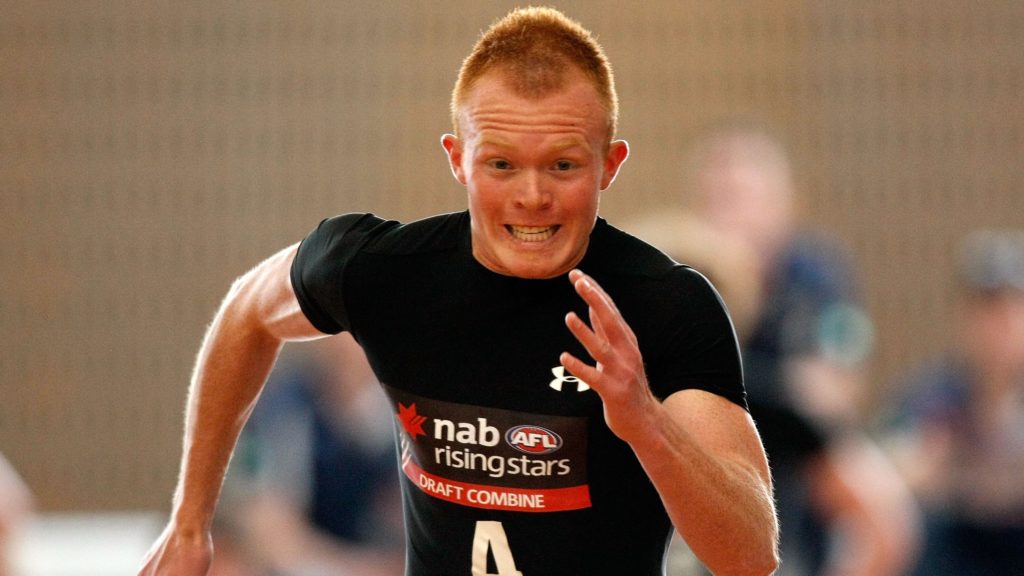A decade ago, the NFL’s premier punters were averaging a touch over 40 yards per punt.
Now, the top-ranked exponents of the punt are pushing beyond 50-yard averages: “In punting terms, that’s absolutely huge,” explained Nathan Chapman, head coach of ProKick Australia, a program designed to transition Australian athletes into college football punters.
So, what’s behind the rise in punting proficiency?
You may have heard about former Saint Arryn Siposs, who earned a spot as the starting punter at the Philadelphia Eagles, or Cameron Johnston, the ex-Demon whose booming boot is now impressing at the Houston Texans.
Then, there’s Michael Dickson, who was a listed player for Sydney’s reserves team and recently stunned the Seattle Seahawks crowd by pouncing on a loose ball — after it had been smothered (or blocked) from his initial attempt — and proceeding to punt it down the field. To the Australian eye, though, it did not seem overly extraordinary; instead, it resembled a relatively common passage of Aussie Rules play.
Former Geelong best-and-fairest winner Ben Graham, whose later NFL career spanned from 2005 to 2012, gave aflplayers.com.au an insight into why it left American viewers with dropped jaws.
“He (Dickson) is making the headlines with his amazing ability to make plays an American college punter wouldn’t have the instinct to pull off, because they haven’t been brought up in that kind of environment,” Graham said.
Put simply, the competition for punting positions has intensified due to the contingent of Australian Rules athletes vying for spots in college, and later, the NFL. In turn, the quality of punting has improved.
“The American kids who have been practising, now, they really practice,” Chapman said. “They’ve had to be on their game, because we’ve sent over some really quality talent.
“There’s more talent filtering through all of the divisions in college, so there’s more talent being prepared for the draft.
“We feel like we’ve had a real helping hand in raising the bar.”
Former AFL players, like Graham, also introduced a new set of skills to the punting kitbag.
“When I went over, they hadn’t really seen the drop punt before,” Graham said. “So the greatest compliment was when American punters started to use the drop punt. They all use the ‘drop punt’ now (they call it ‘end over end’) when they’re punting inside 50 [yards].”
It isn’t all smooth sailing, though.
First, one has to master the technical side of punting. Possessing a lengthy kick is only one part of the equation.
“You could say it’s just like golf. There’s no point being a massive driver if you hit one on the fairway and the next three go in the trees. You’ve got to put it where you need to,” Chapman said.
“Because the ball is pointier, the edges round up really quickly, so the margin for error is reduced. If you move the ball too much, or have an arc on you, or swing when kicking, you can just hit the wrong part of the ball. You really have to hit that sweet spot to get something out of it.
“Then you’ve got the conditions and the pressure to factor in. You’ve got people rushing at you and you’ve got 1.2 seconds to catch it, take those two steps and then do it perfectly.”
NFL aspirants are typically required to forge a four-year college career first, too, and it’s not just about their on-field talent.
“Once you go over to [college in] the US, you’ve got to keep your grades up. Otherwise, you can’t play football. You’ve got to hand your work in, and you’ve got to go to class,” Chapman explained.
Australian punters have earned recognition in the US, but the AFL-developed skillset, as Graham points out, is not being welcomed by all.
“It’s caused a little bit of controversy,” he said.
“I find it difficult to see another player come straight from the AFL into the NFL — they’ll all go through the college pathway — so the criticism is that colleges recruiting mature-age Australian athletes is costing young American punters a spot.
“But ultimately, college is a big-money game, even though it’s an amateur sport.”
Then, upon making an NFL list, the environment becomes even more cut-throat.
“Some people think the NFL stands for ‘Not for Long,’” Graham said. “You understand the business that you’re in. I played for four teams, so you make the most of it while you can. You know there’s plenty of movement, especially in the punting position.”
You might, then, be wondering why Australian footballers decide to voyage across the Pacific Ocean in the first place.

Siposs and Johnston, as former AFL players who were delisted by their clubs, provide exemplary case studies.
“Most of the guys who leave the AFL, they still think they can play,” Chapman said. “They’ve still got something to offer, they’re still chasing something, and there’s something left in the tank they need to fulfill.
“Cam Johnston was playing at Melbourne for a couple of years, got injured, and then they let him go. Then he went on to play in front of 105,000 people every week for four years (at Ohio State), now he’s in the NFL and it’s the same. He’s all of a sudden had an eight-year career playing in front of crazy crowds, he’s got a degree and he’s really changed his life.
“’Sippa’ was the same. Gone from the bells and whistles of the AFL to then playing and enjoying his footy at Williamstown, and it’s like, ‘I might try this’, and he’s up into playing in front of 110,000 people, and now in his first full season as a starter, just by making a phone call, sending us an email, coming down for a kick and trusting the process.”
